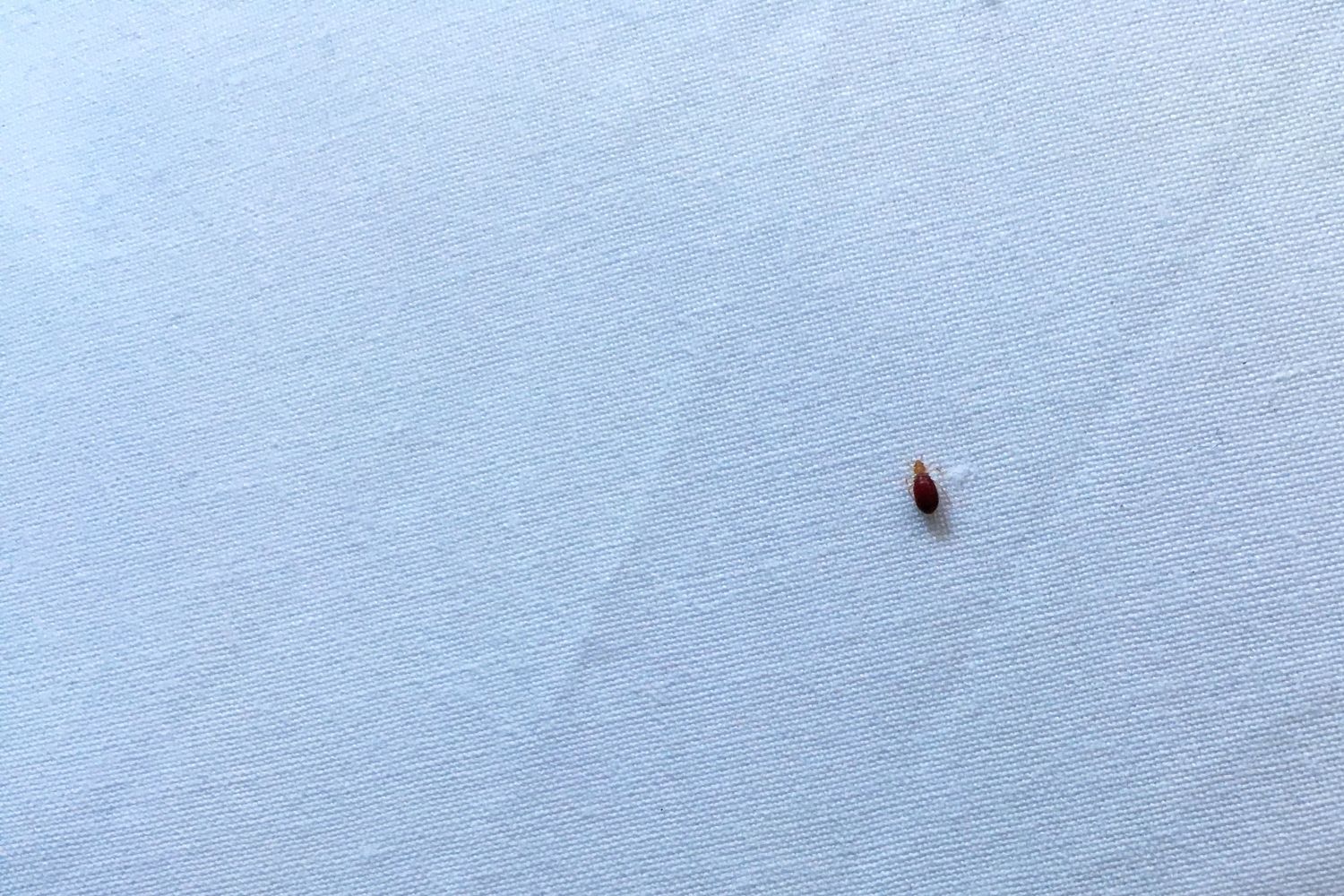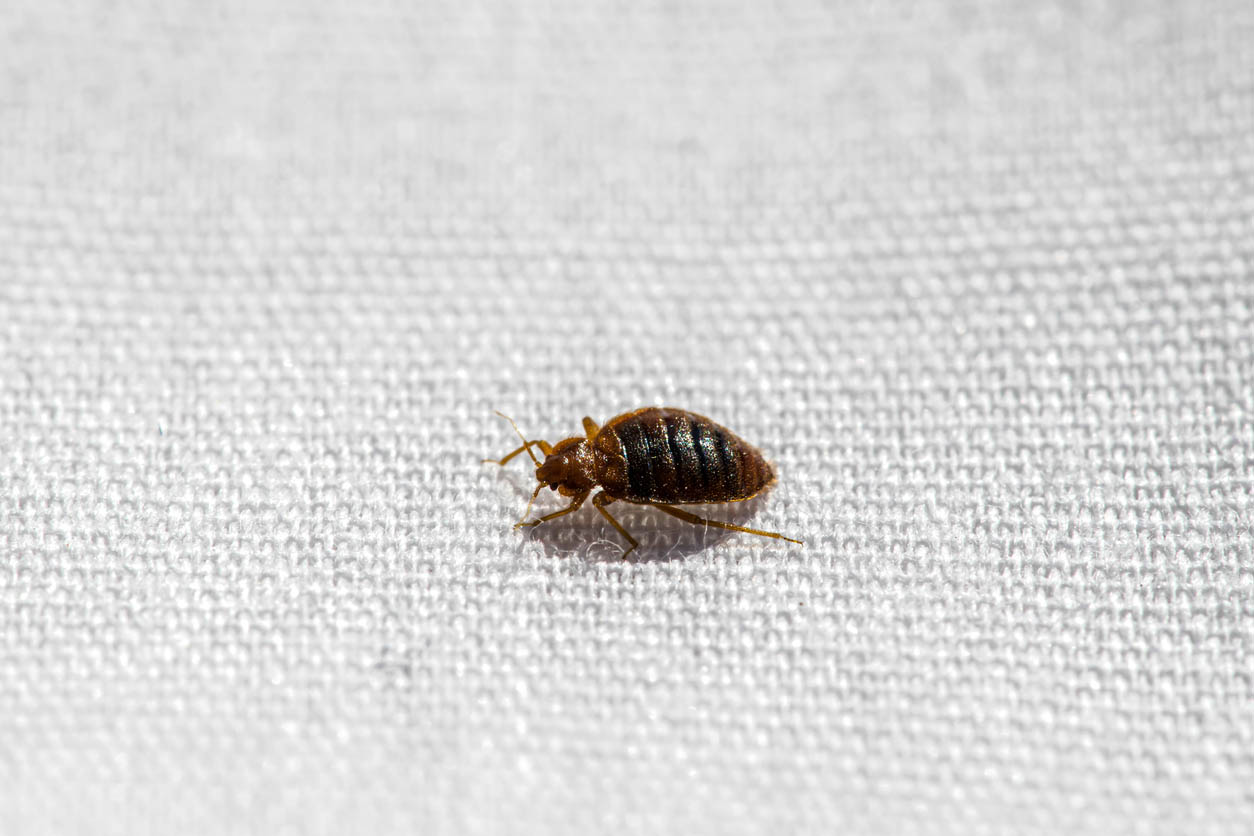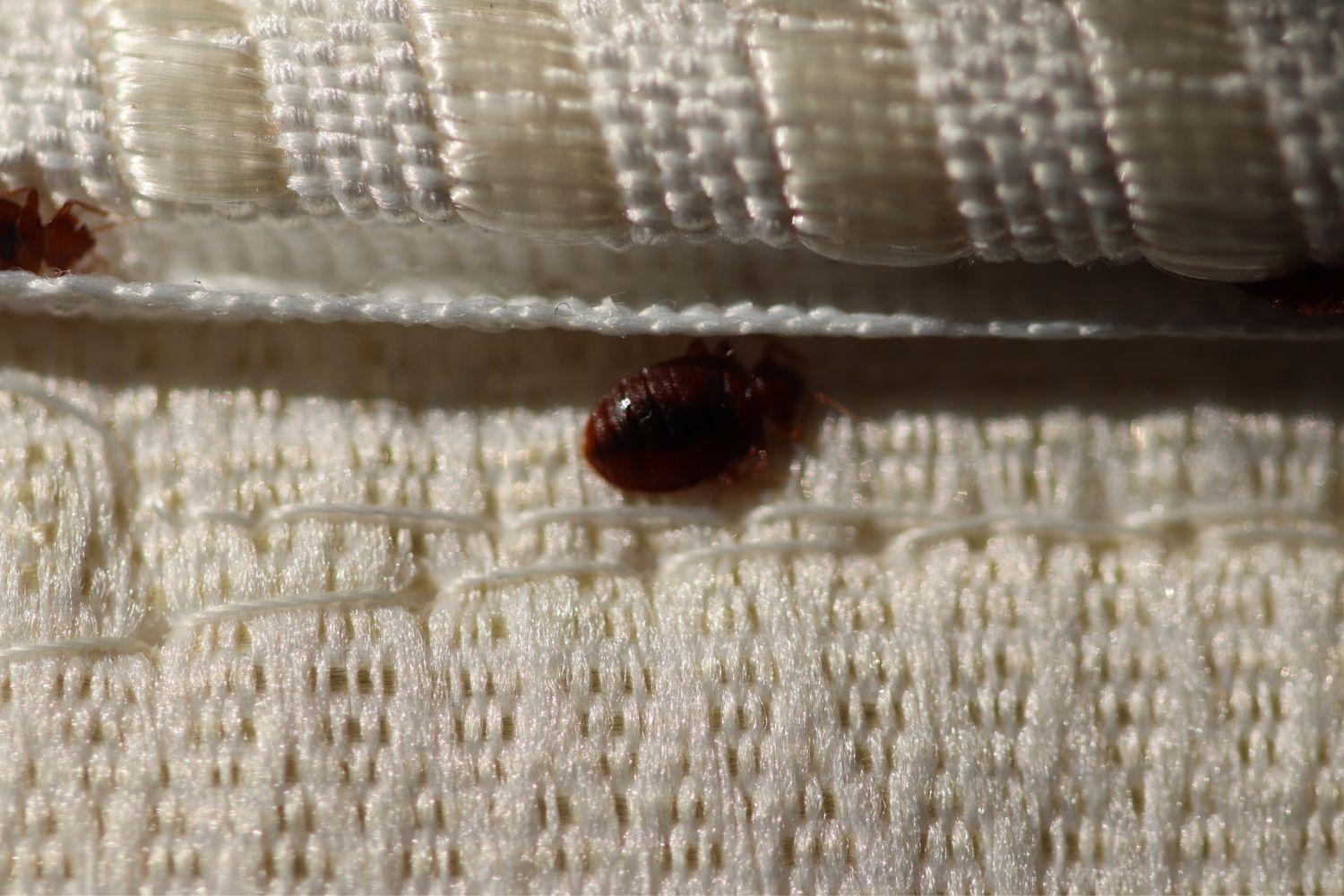

We may earn revenue from the products available on this page and participate in affiliate programs. Learn More ›
Q: I’m about to move into a new apartment, and I’m concerned about bed bugs. I heard that they can hitch a ride on moving boxes or already be in the apartment building, but I don’t want them in my place. What attracts bed bugs? If I keep my place really clean, will they stay away? How can I prevent them from making a home in my apartment?
A: Unfortunately, bed bugs are attracted to humans. These flat, reddish-brown bugs resembling apple seeds are drawn to carbon dioxide and warmth. Bed bugs need blood to survive—and people are a pretty excellent source. Bed bugs like to hide in soft bedding and in crevices of mattresses, box springs, and bed frames. They’re good at hiding during the day and typically become active at night when we sleep, although they can feed at any time when we’re inactive. Bed bugs can be found in beds but also in theaters, public transportation, airports, clothing stores, libraries, and hotels. They can hitch a ride on clothing, shoes, luggage, bags, and boxes.
It’s a pervasive myth that bed bugs are attracted to dirty homes, and many people believe that keeping your house clean will deter bed bugs; however, that’s just not the case. If a home is messy and dirty, it may be more difficult to spot the bed bugs. This will result in an extensive infestation, and it will be tough to get rid of them. When a home is clean and neat, bed bugs will be easier to spot and eliminate before the problem gets out of control. And while bed bug infestations are common in heavily populated areas, they can happen anywhere. According to the Centers for Disease Control and Prevention (CDC), the best way to prevent a bed bug infestation is to be vigilant for signs of an infestation. Here, we’ll explain how to find bed bugs, how to prevent bed bugs, discover what attracts bed bugs, and more.
Bed bugs feed on warm-blooded creatures. Body heat and the carbon dioxide you exhale draw them in.
Bed bugs are attracted to body heat and carbon dioxide from warm-blooded animals. When humans sleep, we are inactive, and the carbon dioxide we exhale surrounds our heads. This is why the majority of bed bug bites happen on the head and neck, although these bugs can bite on other exposed areas of the body. Finding a cozy, warm bed is just as attractive to a bed bug as it is to people. Bed bugs are drawn in by the warmth and moisture on our bodies, and they can detect that from up to 3 feet away. Since bed bugs don’t jump or fly, they need to stay close to their food source. This is the reason they congregate in and around beds—so they can feed while their host is asleep and unaware. When they sense a heat source, they know a meal is close by. According to the CDC, bed bugs usually stay within 8 feet of a sleeping human host, but some bed bugs have been recorded traveling as much as 100 feet during the night to get a blood meal.

Bed bugs prefer warm temperatures, and the crevices of a mattress or box spring provide the perfect home.
Where do bed bugs hide? They like to make a cozy home in the crevices of a mattress or box spring since it’s close to their next meal. They like to congregate in areas around the bed, small nooks in a mattress or box spring, or folds in bedding or an upholstered bed frame. The warmth we give off while sleeping is attractive to bed bugs, and they like to remain close to their food source. They’re attracted to dark-colored sheets and bedding and are inclined to congregate around black or red fabric. (It used to be speculated that bed bugs preferred black or red bedding because the color was similar to blood, but it’s probably because darker bedding offers more protection.)
It’s recommended to use lighter-colored sheets and bedding, not only because the bed bugs aren’t as attracted to those colors, but also because it’s easier to see the bed bugs if they’re present. When they’re not feeding, bed bugs can commonly be found around the piping of mattresses, and they can be found in other areas of the home, not just in and around the bed.
You can find bed bugs in other areas of the home—not just the bed.
If a home is heavily infested, bed bugs can be found in many different areas. The bedroom is the most common place to find bed bugs, but there is a bevy of other sites in the home they can hide, including:
- Edges of carpeting
- In cracks of wooden flooring
- In between furniture cushions
- In drawer joints
- Behind wallpaper and wall hangings
- In or behind clocks
- In window treatments
- In woodwork joints
- In screwheads
More than anything, bed bugs like to live in areas where humans like to rest or sleep. Their narrow bodies and ability to survive for months and sometimes up to a year without feeding make them excellent hiders. They have the potential to hide in mattresses and furniture for months before they’re seen. This is why it’s a good idea to be on the lookout for bed bugs and inspect bedding and furniture regularly.
Keep in mind that even the cleanest homes can have bed bugs. Vacuuming often will help pick up any bed bugs that may have hitched a ride into your home. If you use a bagless vacuum, cleaning the dust container and filters in hot water will get rid of bed bugs, larvae, and eggs. Sealing crevices and cracks in walls, woodwork, around outlets, floorboards, windows, and doors will discourage any bed bugs from traveling within the walls of your home.
Dirty laundry can attract bed bugs.
Worn clothing and slept-on sheets hold our sweat, oils, and scent—which can also draw in bed bugs. Dirty laundry serves a dual purpose for smelling like a meal and providing a hiding place for bed bugs. If there is no human host near, bed bugs like to live in dirty laundry until they can feed on human blood.
This is an excellent motivator to clean up all the piles and baskets of laundry and wash clothes and bedding on a regular basis. If you use a shared laundry facility, transport your clothing in sealed plastic bags. If you have an active infestation at home, be sure to dispose of the original bag and use a new one to transport the clean items home. When removing items from the dryer, put them directly into the bag and fold them at home. Washing clothing and bedding in hot water and drying them on the highest dryer setting will help kill bed bugs, larvae, and eggs. Eliminating clutter in the home will reduce the potential hiding places for bed bugs.

Bed bugs typically bite in groups of three, and some telltale signs can be evidence of their presence.
Bed bugs feed on our blood by inserting a beak or proboscis into the skin. It can take up to 10 minutes for a bed bug to feed, and that meal will typically last them for days. You’ll generally find bed bug bites in lines or groups of three—though bites can occur singly.
After feeding, bed bugs will quickly find a place to hide and digest their meal. They commonly bite the head and neck, but they can also feed on other exposed areas of skin, including the feet, legs, arms, and hands. It’s important to note that bed bug bites can look similar to bites from other bugs, such as fleas and mosquitoes.
Some people may have a severe reaction to a bed bug bite by developing itchy bumps, lesions, pustules, or rash-like symptoms. Others will not have a reaction at all and don’t realize that a bed bug has bitten them. Since bed bugs don’t carry and transmit disease, technically, the bites aren’t dangerous. Excessive scratching at the itchy bites can cause an infection due to broken skin, but this can be mitigated by using an antibiotic ointment or spray.
There are also psychological side effects from being bitten by bed bugs: not being able to sleep for fear of being bitten again, the thought of bed bugs crawling on your body while you sleep, and thinking the reason you have bed bugs is because you have a dirty home.
How often do bed bugs feed? Bed bugs will feed at least once before they molt and cast off their exoskeleton, although some bed bugs feed once a day. They typically molt five times before they reach adulthood. Adult bed bugs usually live between 2 and 4 months, and some can survive up to a full year. Young bed bugs have adapted to survive from several days to a few months without feeding on blood, and adult bed bugs can live up to a year without feeding. Bed bugs can also feed on pets, such as dogs, cats, and other warm-blooded animals, but they prefer human blood.
Some signs that you have bed bugs in your home are fecal spots of digested blood that will appear as rusty brown or brownish-red smears on bedding or mattresses, yellowish cast skins or the empty shells they discard when they molt as they go through their growing stages, eggs and eggshells, and live bed bugs.
Bed bug outbreaks are more common in cities—but they have the potential to happen anywhere.
Where do bed bugs originate from? Some of the earliest surviving fossils of bed bugs are over 3,500 years old. They were found in caves that both bats and humans occupied. Bed bugs are found all over the world and are very common in densely populated areas that use bed frames and soft mattresses.
The chemical insecticide DDT was once used as a bed bug deterrent. These bugs were almost eliminated before the use of DDT was banned due to its toxicity, danger to the environment, and likely carcinogenic properties. Since bed bugs can travel around the world by attaching themselves to luggage, clothing, and bags, these pests don’t seem to be going away anytime soon. The worst bed bug outbreaks happen in cities, but infestations can happen anywhere humans live.
When traveling, examine mattresses, bedding, cushions, curtains, and soft upholstery in hotels for signs of bed bugs. Place your luggage on a hard surface while you’re examining the room, and opt to place a purse in your lap instead of a carpeted area. Check the seams, crevices, and folds of your luggage promptly when you arrive back home for signs of bed bugs. When using public transportation, keep in mind that bed bugs quickly move toward body heat, and a short bus or train ride is enough for them to attach to clothing and get into your home.

A bed bug infestation is difficult to eradicate and should receive professional treatment.
Bed bugs are challenging to get rid of. If you see just one in your home, you should call in a professional. Once these bloodsuckers are established in your home, they can breed quickly. One female bed bug can lay between 200 and 250 eggs, and they need between 6 and 10 days to hatch. If you have a bed bug infestation, it’s recommended that you call in a professional as soon as possible.
A professional exterminator is skilled in using specialty equipment, insecticides, and non-chemical controls, such as steam treatments, heat treatments, and vacuuming. Professionals are required to undergo specialized training to use insecticides to treat bed bugs safely. Many people are concerned that they will have to dispose of all their furniture if they have bed bugs, but a professional exterminator can heat treat furniture to kill bed bugs. This involves using a heat treatment that reaches 118 degrees Fahrenheit for a minimum of 70 minutes or can involve removing the furniture and heat treating it in a container. Keep in mind that treating your home with non-chemical controls does not guarantee that bed bugs will not come back into your space.
A few things you can do on your own to help get rid of bed bugs is to wash or dry clothing and bedding in temperatures hotter than 122 degrees Fahrenheit for at least 20 minutes. This will kill bed bugs, eggs, and larvae. Other items that can be washed and dried in hot temperatures include bags, backpacks, stuffed toys, curtains, shoes, and other machine-washable items. You can also use cold to kill bed bugs if items are left in a freezer at 0 degrees Fahrenheit for 3 days. A protective mattress cover that completely encloses a mattress or box spring can potentially eliminate cozy hiding spots for bed bugs. Be sure to periodically check the cover for rips, holes, and tears. Some mattress covers are treated with a pesticide to specifically deter bed bugs. If you buy furniture or other items at a secondhand store, it’s essential to protect your home from bed bugs. Check items thoroughly for signs of bed bugs, and clean them carefully.
Some people use bed bug interceptors or bed bug traps to catch live bed bugs as they try to make their way up furniture legs or across floors. These work by having a slippery surface that prevents the bed bugs from leaving the trap’s surface. While these will catch and trap bed bugs, they will not eliminate larvae or eggs. It’s common to use these items for the early detection of bed bugs in the home and then call a professional exterminator to eliminate the infestation.
It is not recommended to use a bug bomb or other store-bought insecticide on your own to treat bed bugs. Bug bombs, or insect foggers, are not effective when treating a bed bug infestation. Bug foggers can expose you, your family, and your pets to harmful pesticides.
